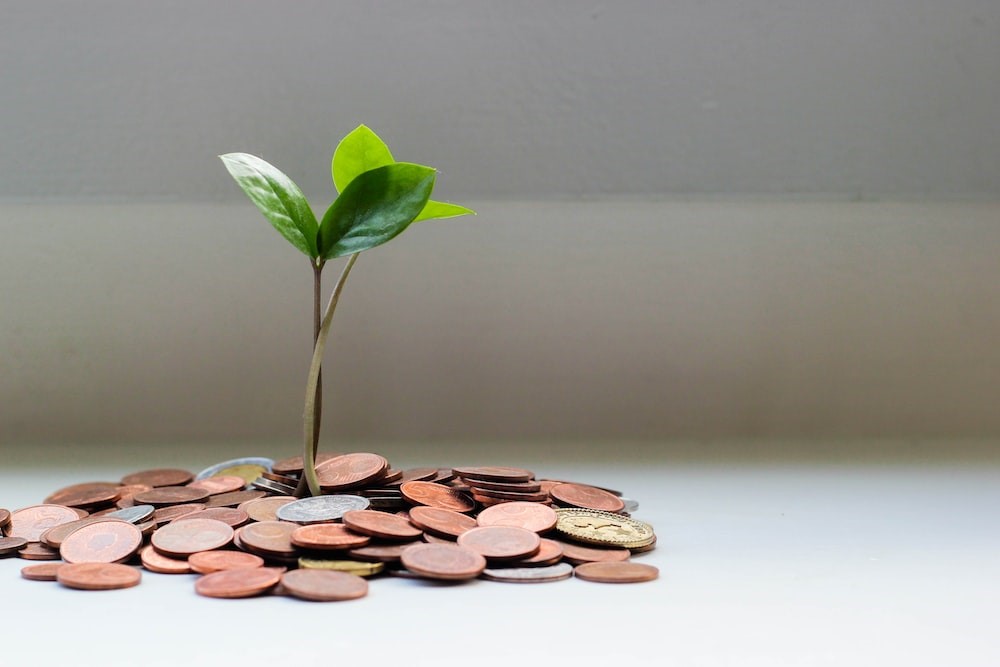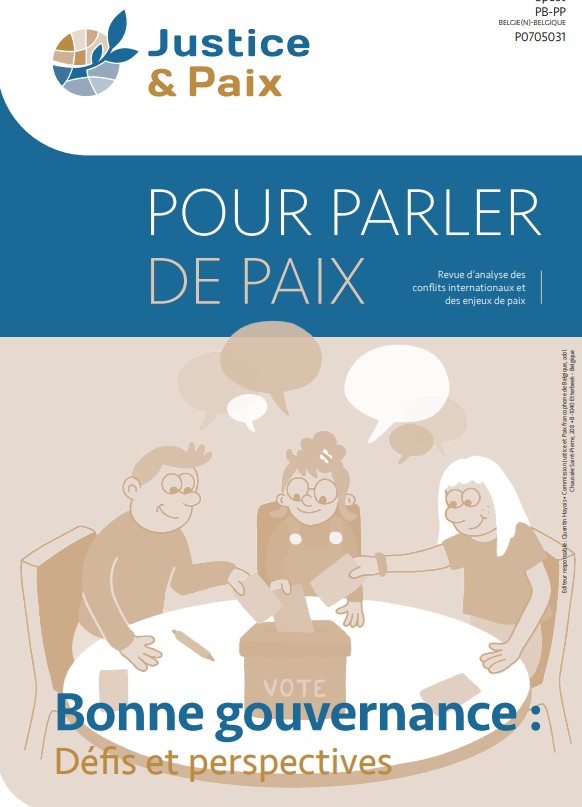Based on the observation of a dematerialized economy, local currencies began to emerge all over the world, particularly in Belgium. It is a citizen tool that allows us to rethink money no longer as a goal in itself, but as a means of exchange.

Since the 2000s, new forms of currencies parallel to traditional central currencies have emerged all over the world. For example, we can identify virtual currencies, such as bitcoin, loyalty systems, such as the system miles in certain airlines or video game currencies, but also complementary currencies, such as vouchers
purchases, gift vouchers, meal vouchers, or local currencies.
Local currencies can be found in Ecuador, where UDIS supports rural communities of small producers, in Brazil, where Saber facilitates entry into education[1], but also in the French-speaking world, such as in France, Quebec, or Belgium.
But where do local currencies come from? How does this system work? What is its use? And what future can be envisaged from this? These questions guided the writing of this article, which will attempt to provide a non-exhaustive portrait of this complementary tool to the conventional monetary system.
Originally, the observation of a dematerialized economy…
Since the abandonment of the gold standard (Bretton Woods agreements) in 1974, it is the markets which set the value of each currency, in relation to each other. In Europe, the Euro is created, on the one hand, by the ECB (independent of the states since 1999) and, on the other hand, by private banks, via credit. Furthermore, in our globalized economy, money exists in two forms: fiat money, which is the money in our pockets, which really circulates for the exchange of goods and services in the real economy, and scriptural money. , which are the numbers in our bank accounts. Today, scriptural money represents more than 90 % of the currency in circulation[2].
During the crisis of subprime in 2008, which revealed the speculative fever and risk-taking taking place on international markets, a major reflection emerged on the uncertainty which hangs over our daily economy[3].
A real citizen movement then emerged, raising many questions about the role that money plays in our daily economic development.[4]. Movements supporting short supply chains for food products have emerged, such as SEL or GAC. Film debates like “In search of meaning”[5] or tomorrow "[6] have contributed to making these themes known, which have also been addressed by economists, such as Bernard Liétaer, a Belgian economist who is interested in regional and complementary currencies[7].
Although local currencies already existed almost everywhere in the world before the crisis, the dynamic grew further and reached other countries, such as Belgium, where the Epi Lorrain was put into circulation in 2012 Today, around ten years later, we can count 17 citizen currencies in the Wallonia-Brussels Federation, such as the Yar (Tournai), the Zinne (Brussels), the Ropi (Mons), the Carol'Or ( Charleroi), Lumsou (Namur), Slate (Lesse and Semois), Volti (Marche, Ciney), Talent (Walloon Brabant), Val'heureux (Liège), Sous-Rire (Malmedy),… In 2021, this represented 1,288,192 euro equivalents in circulation and 2,428 participating providers[8].
Money as a means of exchange and more as a goal
In reality, local currencies are not a new phenomenon! We often have the impression that only one currency exists... which is a misconception. There have indeed been many periods in history where currencies were reserved for the people, where certain currencies were only used for distant trade, etc.
Money can have three main functions: the exchange of goods and services, serving as a unit of account, and serving as a store of value [9]. The local currency, whose exact and legal term is in fact “voucher to support the local economy”, aims only to fulfill the function of currency of exchange[10].
The main characteristics of this alternative means of payment to dominant monetary systems are to be of a “local” nature (active in a restricted economic area), “complementary” (not intended to replace conventional money but to operate in parallel) and “citizen” (initiative of volunteer citizens who are committed to promoting and controlling a responsible economy in the service of the community) [11]. By going only towards local economic actors, this system cannot fuel financial speculation, nor very polluting or destructive sectors of our environment and the socio-economic fabric, which makes it a means of societal change, but also a new tool for sustainable growth and
to fight against inequalities[12]. This approach demonstrates the desire to find levers to re-embed the economy in the social, through a participatory mechanism for reappropriation of currency [13].
Concretely, at the origin of a local currency system, several citizens of the same region come together, form a non-profit organization and choose the name, the logo, the colors and the banknotes, which will include a serial number. and a hologram. Then, a values charter is co-written, in order to exclude companies that do not correspond to the group's philosophy (like a supermarket for example) or to define the assets required to be part of it. On this basis, different providers will be able to become partners of the local currency. Once the local currency is put into circulation, citizens will have the possibility of exchanging Euros for units of local currencies, via exchange counters spread across the territory.[14].
Once exchanged, the Euros will go to the bank account of the non-profit organization, in the “counterpart reserve”, which is therefore equivalent to the mass of local currency notes in circulation. This reserve allows you to recover the Euros exchanged at any time. It is also necessary to mention that, often, the bank chosen by the collective is a bank that finances ethical projects, so that the Euros placed in the account also work for the common good.
We can note different beneficial effects for the territory in which the local currency is established. This involves both relaunching local commerce, by capturing euros to force them to circulate in a given region, stimulating a local and sustainable economy, by promoting the exchange of ethical and responsible goods and services, and promoting social cohesion. of a region, and offer a tool for resilience, by putting the economy back at the service of citizens and local businesses.
Beneficial effects can also be noted for citizens, by contributing to a change in consumption practices. Indeed, local currencies are part of a transition process and have a decision-making function, because we will tend to go more easily towards member service providers who have signed the ethical charter specific to the local currency. They also help strengthen social ties and commercial partnerships.[15].
What future for local currencies?
An important feature of this alternative is to have both one foot in the system and one foot outside the system. Indeed, it is necessary to have a foot in the system, in order to be credible and to have political leverage, which may for example be necessary to inject money into local currencies[16], but also be sufficiently outside the system to be able to propose solutions.
In the future, if conventional currencies come to have liquidity concerns, local currencies could be used to compensate for this, as has already been seen in certain countries. In all cases, the success of these currencies will depend on their insertion into more global regulations.[17].
Currently, various developments are underway, such as digitalized citizen currencies (electronic payment system), or partnership with public authorities[18].
In all cases, local currencies will have allowed the emergence of a system which does not aim for personal enrichment and where money is seen as a tool of exchange, and not an end in itself.
We thank Mr. Raphaël Goblet for his availability and his valuable information on local currencies.
Sarah Verriest.
[1] Legeard N. (2015), Complementary currencies as local tools of the solidarity economy to fight against precariousness, For, 225, 185-190. https://doi.org/10.3917/pour.225.0185
[2] Orban Q. (2019), “Citizen’s perspective on the monetary creation mechanism – why it is urgent to put monetary creation at the service of the common good”, Econospheres
[3] Fourel C., Magnen JP (2015), Study mission on complementary local currencies and local exchange systems
[4] Hopkins R. (2014), They are changing the world!. 1001 ecological transition initiatives: 1001 ecological transition initiatives, Media Broadcast
[5] https://enquetedesens-lefilm.com/
[6] https://www.colibris-lemouvement.org/projets/films/demain-film
[7] Lietaer B. (2011), “At the heart of money”, Editions Yves Michel, 672 pages
[8] Finance (2022), Report on local citizen currencies in Belgium https://www.financite.be/fr/reference/rapport-sur-les-monnaies-locales-citoyennes-en-belgique-2022
[9] Capul J. and Garnier O. (2011), Dictionary of economics and social sciences, Paris: Hatier
[10] Tadjudje, W (2016), The functions of money, Finance
[11] Stamm CB (2021), Local currencies for a post-growth society, Relationships, (815), 45–48
[12] Blanc J. and Fare M. (2014), The economic models of complementary local currencies, Lyon:
Triangle.
[13] Statement from the CGT group on the occasion of the opinion voted in plenary session of April 15, 2015 of the Council
Economic Social and Environmental “New currencies: macroeconomic, financial and
societal.”)
[14] There is a legal requirement that a unit of local currency be equal to one Euro.
[15] Finance (2022), Report on local citizen currencies in Belgium https://www.financite.be/fr/reference/rapport-sur-les-entreprises-locales-citoyennes-en-belgique-2022
[16] As in Charleroi, as a post-Covid recovery.
[17] Kalinowski W. (2014), The socio-economic impact of local and complementary currencies, Notes from the Veblen Institute
[18] Finance (2022), Report on local citizen currencies in Belgium https://www.financite.be/fr/reference/rapport-sur-les-entreprises-locales-citoyennes-en-belgique-2022





